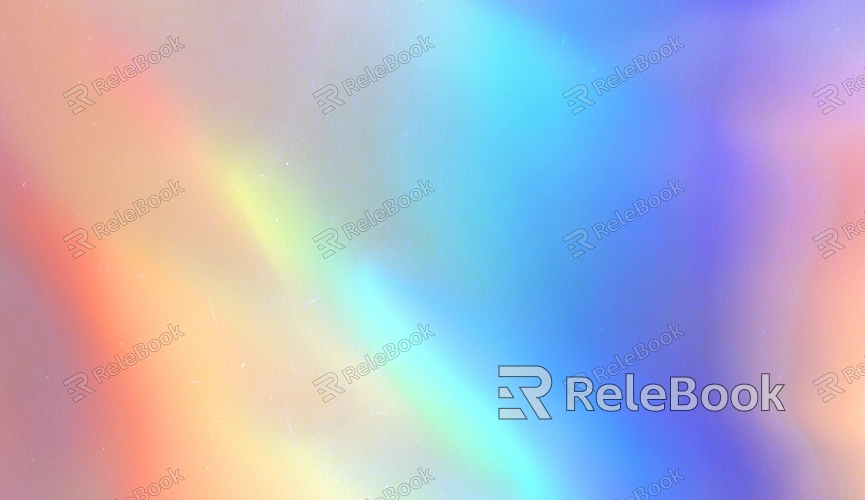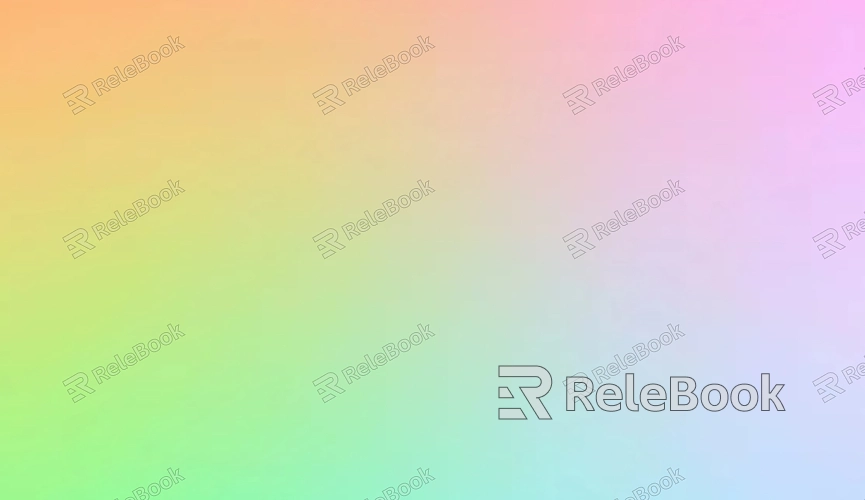What are 3D Color Textures
3D color textures are an essential element in 3D modeling and rendering, widely used in character modeling, environmental design, and virtual product visualization. By adding realistic surface colors, details, and material characteristics to models, these textures enhance visual effects and boost immersion. Whether in game development, animation, or architectural visualization, color textures play a crucial role. In this article, we’ll explore the concept of 3D color textures, how they are created, and how to use them to improve rendering results.

1. What Are 3D Color Textures?
A 3D color texture refers to an image applied to the surface of a 3D model to add color and details. These textures are typically 2D images mapped onto a 3D model's surface to mimic the appearance of various materials. 3D color textures can include various patterns and details, such as wood grain, skin textures, or metal reflections, aimed at making the model appear more realistic and detailed during rendering.
Types
Common types of 3D color textures include base textures, detail textures, and special effect textures. Base textures provide overall color for the model's surface, while detail textures add finer elements like skin texture, roughness, and small surface imperfections. Special effect textures simulate reflections, glossiness, dirt, and more.
Uses
These textures are widely used in 3D games, film animation, architectural visualization, and virtual reality, helping designers create complex visual effects from simple images.
2. Methods for Creating 3D Color Textures
Creating high-quality 3D color textures typically requires a combination of technical and artistic skills. Below are a few common methods for creating these textures:
Hand-Painted Textures
Hand-painted textures are one of the most traditional and common methods for creating textures. Designers can use image-editing software like Photoshop to either hand-paint or modify images to create customized textures. The advantage of hand-painted textures lies in their high level of freedom, allowing designers to control the texture’s details and artistic style precisely.
Photographed Textures
Photographed textures are created by capturing real-world objects and surfaces, such as walls, stones, and wood. The advantage of this method is that it captures the natural details of the real world, resulting in more realistic 3D models. This approach is particularly useful for architectural and environmental designs that require high levels of detail.
Procedural Textures
Procedural textures are generated using specialized software, often used for creating natural environment textures like ground, desert, or sky. These textures are algorithmically generated, which makes them ideal for large-scale scenes where hand-painted or photographed textures may not be feasible.
3. Texture Mapping and UV Unwrapping
To make sure that textures fit seamlessly onto a 3D model’s surface, texture mapping and UV unwrapping are essential techniques.
UV Unwrapping
UV unwrapping involves "unfolding" the 3D model's surface onto a 2D plane. Through UV unwrapping, designers can precisely control how textures are displayed on a 3D model, avoiding issues like texture stretching or misalignment. Common UV unwrapping methods include automatic unwrapping and manual adjustments.
Texture Mapping
Texture mapping is the process of applying 2D color textures to a 3D model’s surface. By adjusting the UV coordinates, designers can fine-tune the texture’s placement, ensuring it fits the model’s surface perfectly.

4. Rendering and Applying 3D Color Textures
After applying 3D color textures to the model, the next step is configuring rendering settings to achieve the best results.
Lighting and Reflections
In the rendering process, lighting and reflections are key factors that affect how textures appear. Designers need to adjust the reflection properties of the textures based on different lighting conditions to ensure the textures look natural under various light sources. For materials like metal and glass, special attention is required for reflection and glossiness settings.
Material Property Adjustments
Different texture materials (such as wood, metal, or skin) require different material settings. For wood or stone textures, it’s common to adjust surface roughness and reflectivity, while skin or fabric textures may require more refined glossiness and detail adjustments.
5. Common Software and Tools
When creating and applying 3D color textures, there are several software tools available, each with its strengths and weaknesses.
Blender
Blender is an open-source, powerful 3D modeling and rendering tool that offers various texture creation and mapping features. Blender’s texture painting tools allow users to paint directly onto the 3D model, greatly improving workflow efficiency.
Substance Painter
Substance Painter is a software specialized in texture painting, widely used in the gaming and film industries. It offers intuitive painting tools that help designers easily create complex texture effects like dirt, scratches, and wear.
Photoshop
Photoshop is a commonly used image editing software for texture creation, especially for adjusting texture details and compositing images.
3D color textures are an indispensable element in 3D modeling and rendering. They effectively enhance a model's visual realism, creating a more detailed and lifelike appearance. By selecting the right texture types, mastering texture creation techniques, accurately unwrapping UVs, and adjusting rendering settings, designers can create more detailed and vibrant 3D works. If you're looking for more high-quality resources to elevate your texture work, the Relebook platform offers a wide range of 3D texture assets to help improve your projects' visual impact and meet higher design demands.

